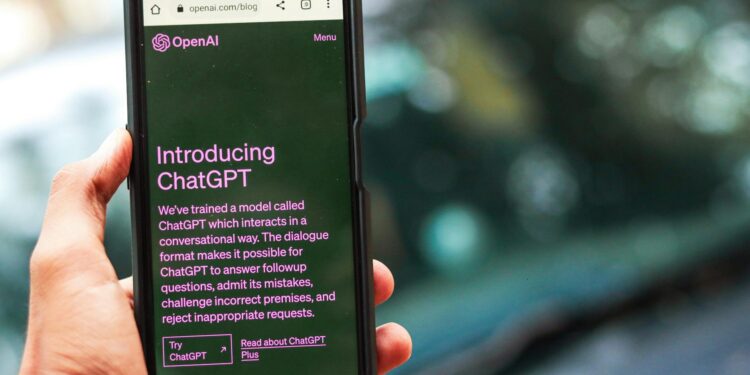As generative AI rapidly redefines the landscape of every industry, its transformative potential is undeniable. From automating mundane tasks to sparking groundbreaking innovations, AI is no longer a futuristic concept but a present-day reality shaping our professional and personal lives. However, many individuals and organizations find themselves stuck at the shallow end, interacting with these powerful tools through basic, often ineffective, prompts. This article will guide you beyond the rudimentary “tell me about…” or “write me a…” commands. We will explore how to craft sophisticated prompts, strategically integrate AI into your daily workflows, and ultimately leverage its full power to revolutionize your efficiency, foster creativity, and future-proof your career in this AI-driven era.
The foundational shift: beyond simple queries
The advent of generative AI marks a pivotal shift in how we access and process information, moving far beyond the traditional search engine paradigm. While a simple query to Google provides links to existing content, a generative AI, like ChatGPT or Gemini, creates entirely new content, synthesizes information, or even generates code based on your input. This fundamental difference means that merely asking broad, open-ended questions, much like you would to a search engine, severely underutilizes AI’s capabilities. A basic prompt such as “write an email” will yield a generic, often unusable, response. This “garbage in, garbage out” principle is amplified with generative AI; the quality and utility of the output are directly proportional to the thoughtfulness and precision of the input. Understanding this distinction is the first step toward unlocking true leverage. It compels us to view AI not as a mere information retrieval system, but as a highly capable, albeit literal, collaborator that requires clear direction and context.
Crafting intelligent prompts: the art of context and constraints
Moving beyond basic prompts involves developing an understanding of what makes a prompt “intelligent.” This is where the art and science of prompt engineering come into play. Intelligent prompts are characterized by their clarity, specificity, and the inclusion of sufficient context and constraints to guide the AI towards the desired outcome. Consider the following elements:
- Define the role: Instruct the AI to “act as” a specific persona (e.g., “Act as an SEO expert,” “Act as a senior software engineer”) to set the tone and perspective for its response.
- Specify the goal: Clearly state what you want to achieve. What is the main objective of the AI’s output?
- Provide context: Include relevant background information, key details, or prior interactions that the AI needs to understand the situation fully.
- Set constraints: Define parameters for the output, such as word count, tone (e.g., professional, witty, empathetic), target audience, format (e.g., bullet points, essay, table, HTML), and any elements to include or exclude.
- Offer examples (few-shot prompting): For complex tasks, providing one or two examples of the desired input/output can significantly improve the AI’s understanding and performance.
- Iterate and refine: AI interaction is often a conversation. Start with a strong prompt, review the output, and then refine your prompt with follow-up instructions to steer the AI closer to your ideal.
Here’s a comparison demonstrating the impact of intelligent prompting:
| Basic prompt example | Improved prompt example | Rationale/benefits |
|---|---|---|
| “Write an email about a project.” | “Act as a project manager. Write a concise email to the project team (3-5 sentences) announcing the successful completion of ‘Project Phoenix.’ Congratulate everyone, mention the on-time delivery, and suggest a brief celebration next Friday. The tone should be appreciative and professional.” | Defines role, specific goal, length constraint, tone, and key details to include. Results in a highly usable, tailored email. |
| “Summarize this article.” | “As an analyst, summarize the key findings of this research article [insert article text] for a C-suite executive. Focus on the top three strategic implications for our company, presented as bullet points, and conclude with a single actionable recommendation.” | Defines target audience and purpose (C-suite, strategic implications), sets output format (bullet points), and requests actionable insights. |
| “Give me ideas for social media.” | “Brainstorm five engaging social media post ideas for a sustainable fashion brand targeting Gen Z on Instagram. Each idea should include a call to action and utilize a trend like ‘upcycling’ or ‘thrift flips.’ Focus on visual content concepts.” | Specifies quantity, target audience, platform, brand niche, creative constraints (trends), and expected content type (visual concepts). |
AI as a strategic co-pilot: automating and augmenting daily tasks
Once you master crafting intelligent prompts, generative AI transforms from a novelty into an invaluable strategic co-pilot for a vast array of daily tasks. It’s not just about content creation; it’s about augmentation across virtually every professional function. Consider these applications:
- Data analysis and summarization: Feed AI complex reports, financial statements, or research papers and ask it to extract key trends, identify outliers, or summarize critical insights for a specific audience.
- Idea generation and brainstorming: Leverage AI to break through creative blocks. Ask for campaign ideas, product features, presentation topics, or even solutions to complex problems, guiding it with your desired parameters.
- Personalized learning and skill acquisition: Use AI as a personalized tutor. Ask it to explain complex concepts in your field, generate practice problems, or even simulate interview scenarios to prepare for career advancements.
- Code generation and debugging: Even if you’re not a developer, AI can help. Describe a simple script you need, or paste in code that’s not working, and ask AI to generate or debug it, accelerating your productivity.
- Communication drafting and refinement: Beyond emails, AI can draft compelling sales pitches, refine legal documents for clarity, or even adapt a message for different cultural contexts, ensuring precision and impact.
By delegating time-consuming, repetitive, or creatively demanding tasks to AI, you free up your mental energy to focus on higher-level strategic thinking, critical decision-making, and interpersonal interactions that truly differentiate human value.
Future-proofing your career: strategic integration and continuous learning
The ability to effectively leverage generative AI is rapidly becoming a non-negotiable skill for career longevity and advancement. As AI integrates deeper into enterprise workflows, professionals who can strategically partner with these tools will emerge as leaders and innovators. Future-proofing your career involves more than just knowing AI exists; it requires a commitment to continuous learning and developing a nuanced skill set:
- Advanced prompt engineering: Go beyond the basics to master techniques like chain-of-thought prompting, tree-of-thought, and RAG (Retrieval Augmented Generation) to tackle increasingly complex challenges.
- Critical evaluation of AI output: Understand that AI, while powerful, can “hallucinate” or provide biased information. Develop strong critical thinking skills to verify outputs, fact-check, and apply your human judgment and expertise.
- AI ethics and responsible use: Be aware of the ethical implications of AI, including data privacy, bias, and intellectual property. Use AI responsibly and champion ethical practices within your organization.
- Understanding AI’s integration into workflows: Learn how AI tools are being embedded into existing software and platforms (e.g., Microsoft Copilot, Adobe Firefly). Stay updated on industry-specific AI applications.
- Continuous learning: The AI landscape is evolving at an unprecedented pace. Dedicate time to staying abreast of new models, features, and best practices. Participate in online courses, webinars, and professional communities.
Embracing AI as a collaborative partner, rather than a threat, positions you as an invaluable asset capable of driving innovation, boosting efficiency, and maintaining a competitive edge in any industry.
In summary, moving beyond basic prompts is not merely a technical tweak but a fundamental shift in how we interact with generative AI. We’ve explored the importance of understanding AI’s true capabilities, the art of crafting intelligent, context-rich prompts, and the strategic integration of AI as a co-pilot for daily tasks. This journey transforms AI from a simple tool into a powerful partner, augmenting our skills, automating routine, and unlocking new avenues for innovation. By embracing advanced prompt engineering, critically evaluating AI outputs, and committing to continuous learning, you equip yourself with an indispensable skill set. The future of work isn’t about competing with AI, but collaborating with it intelligently. Master this collaboration, and you’ll not only revolutionize your current efficiency but also proactively sculpt a resilient and impactful career path in the dynamically evolving professional landscape.


















